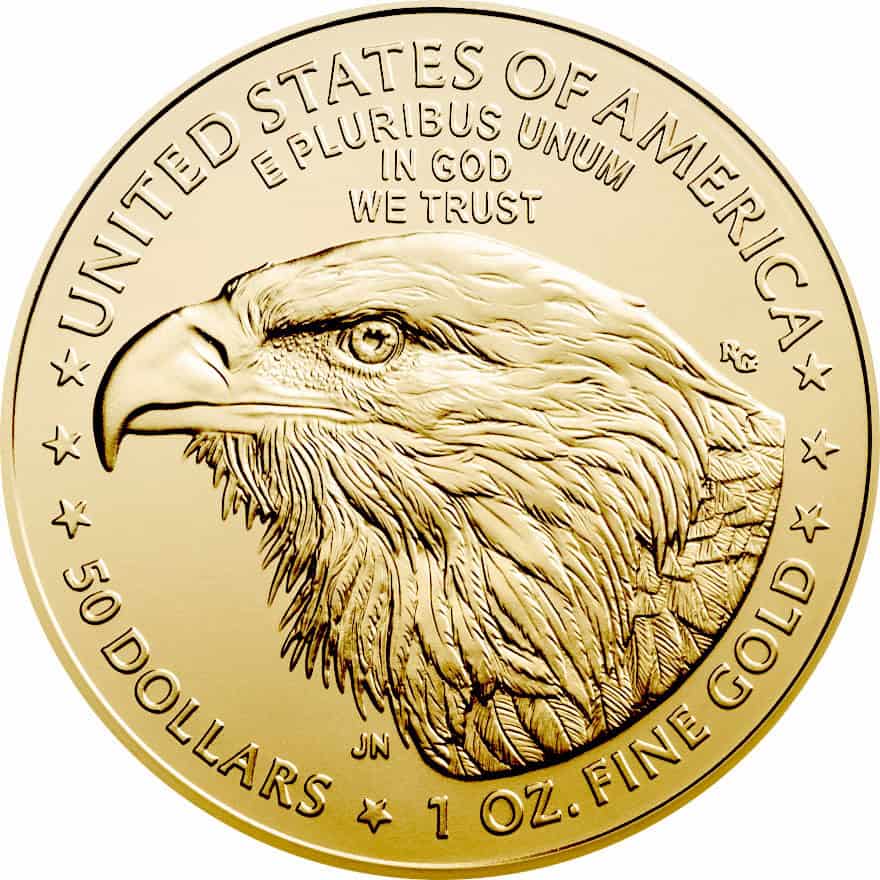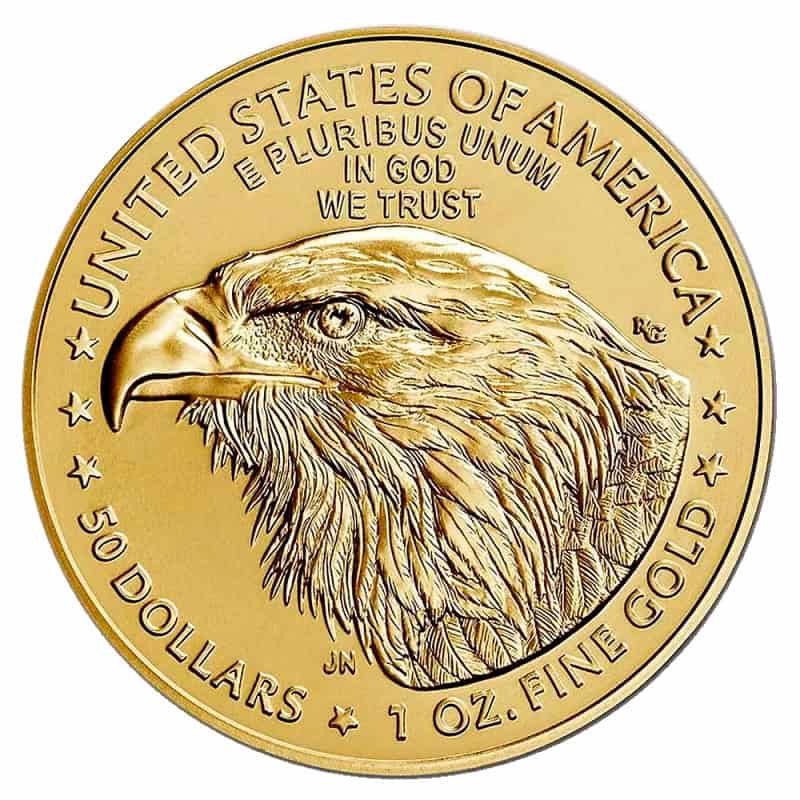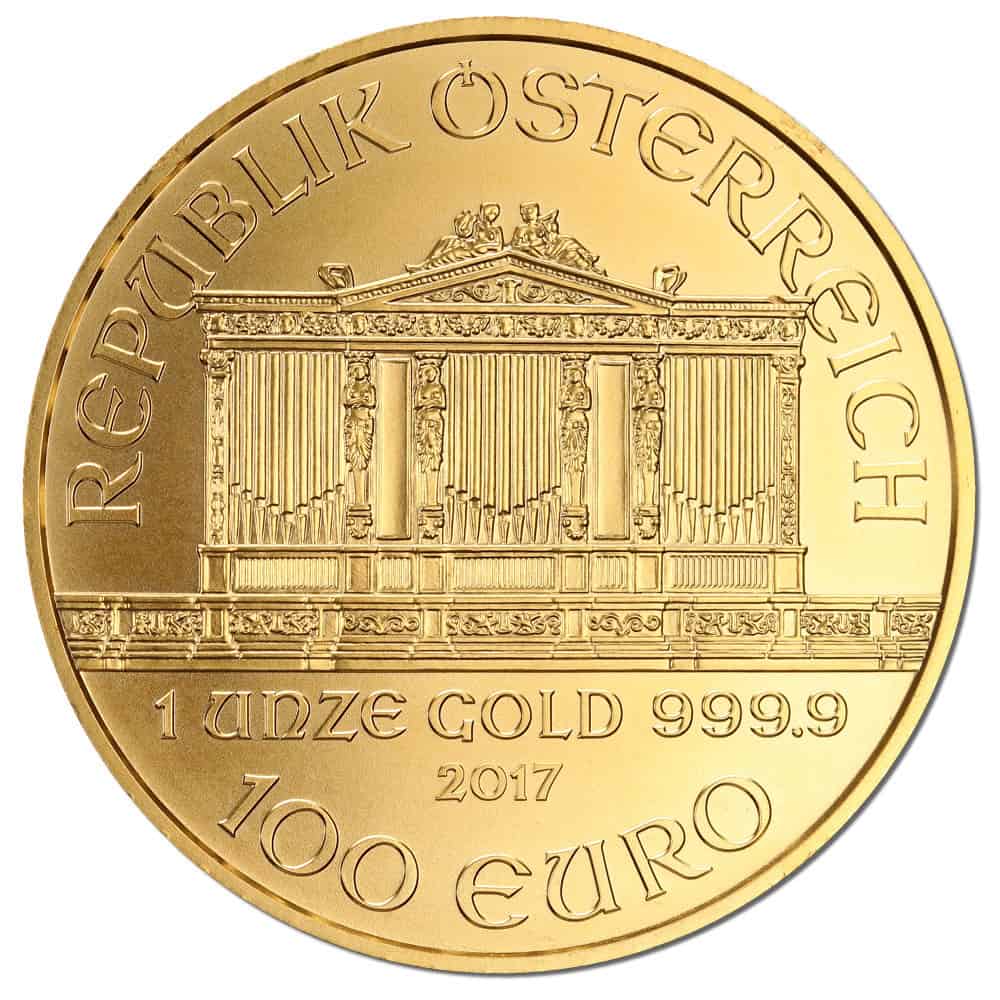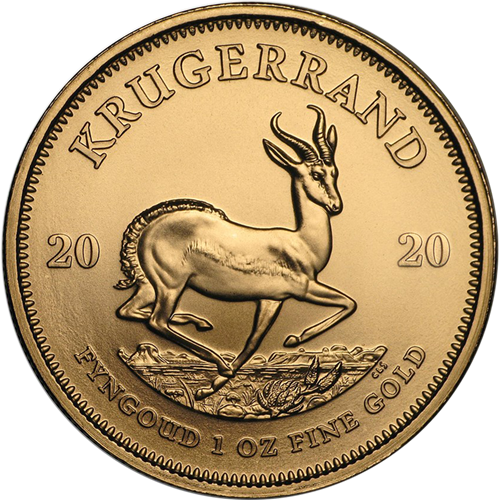Subscribe to get our FREE
GOLD IRA GUIDE

How to set up a self-directed gold IRA account
If you’re wondering how to set up a self-directed gold IRA account, this guide will walk you through the process and explain everything you need to know.
We have already talked about the different types of Ira accounts, and in particular, this one allows you to diversify your retirement portfolio by holding tangible assets like gold, silver, platinum, and palladium.
But which are the true advantages of opening a Gold IRA account with a self-directed method? We talked about this topic in depth in another one of our articles, but we are still happy to discuss this topic from a different perspective.
In fact, a self-directed gold IRA offers a hedge against inflation, market volatility and economic downturns, helping you to protect your wealth. It can be seen as a way to protect your savings while they are invested in tangible goods instead of paper assets coming from the stock market.
We have to stress about the fact that, while investing in precious metals can provide long-term stability, understanding the setup process and the associated rules is key to making the most of your retirement savings.
Before reading this article, we also encourage you to take a look at the IRS regulations about individual retirement accounts.
.
Importance of Diversifying Retirement Portfolios with a Self-Directed Gold IRA
Diversification is a key strategy for managing risks in investment portfolios. By spreading investments across various asset classes, investors can protect their portfolios from the negative impacts of market fluctuations due to any type of global change.
For instance, traditional retirement accounts often invest heavily in paper assets, which can be volatile and susceptible to economic changes.
As we mentioned already in this here, events like the 2008 crisis are a concrete example of how stock market crashes can heavily impact on investors.

On the other hand, including precious metals like gold or silver in a self-directed Gold IRA retirement portfolio can provide stability and security, protecting your wealth against inflation and market downturns. We all remember the incertitude perceived by the Americans after the 2008 crisis, while a lot of people lost their jobs and investments.
As a result, precious metals showed along the years that they can be a valid alternative in such circumstances, assuming the investment is managed wisely. This type of investment involves however additional risks, here is an article about this topic.
How to set up a self-directed gold IRA account? Let's Start from the Beginning

A retirement Gold IRA (Individual Retirement Account) is a type of self-directed individual (Self-Directed Gold IRA) account that allows you to invest in physical gold and other precious metals, such as silver, platinum, and palladium, instead of more traditional assets like stocks, bonds, and mutual funds.
More specifically, a Gold IRA is a specific type of self-directed individual retirement account that is regulated by the Internal Revenue Service (IRS). It allows you to make pre-tax contributions, with investment earnings growing on a tax-deferred basis.
Additionally, this type of account provides a way to diversify a retirement portfolio with tangible assets, offering a hedge against inflation and economic uncertainties.
In conclusion, alongside your traditional IRA, you can also invest into precious metals and allowing them into your account, in a percentage you will decide. This part of your portfolio will be however protected just in case any shock of the economy might erode your savings, while they are held traditionally.
Is it also important to us to mention the fact that precious metals will be held into a dedicated and secured vault, while a third party service provider will take care of the entire transaction.
Key Features of a Gold IRA
- Self-Directed Account: Unlike traditional IRAs, a Gold IRA is self-directed, meaning that the account holder has more control over the investment choices, including the selection of physical precious metals and the % that will be allocated into these types of assets. Famous investors like Kevin O'Leary recommend a 5% gold allocation. Ray Dalio recommends an 8-10% allocation. Many others suggest around 20%of your capital. The choice is yours, but technically speaking, the more you invest, the more you edge against economy downturns. It's about balancing the risk with the fixed costs of holding precious metals into your account.
- Investment in Physical Metals: Gold IRAs allow investments in physical forms of gold (e.g., gold bullion, coins, or bars) that meet specific IRS purity standards. Other eligible less popular precious metals like silver, platinum, and palladium can also be included, and sometimes they offer better deals than gold itself. Everything depends on the company you decide to work with, but keep in mind to do not underestimate metals that are different from Gold.
- IRS Regulations: Self-Directed Gold IRAs are regulated by the Internal Revenue Service (IRS), which imposes specific rules regarding the types of metals that qualify, storage requirements, and reporting. We will talk about this subject in this article.
- Storage Requirements: Precious metals purchased through a Gold IRA must be stored in a secure, IRS-approved depository. Account holders cannot personally hold the metals as it is forbidden, and they can incur in taxes and penalties.
- Tax Benefits: Similar to traditional IRAs, a Gold IRA offers tax-deferred growth on investment gains. As a result, this means that taxes on the gains are deferred until the account holder withdraws funds, typically during retirement.
- Contribution Limits: Contribution limits for Gold IRAs are the same as those for traditional and Roth IRAs. As of 2024, the contribution limit for individuals under 50 is $6,500 per year, and $7,500 for those 50 and older (catch-up contribution).
- Rollover and Transfer Options: Funds from other retirement accounts, such as a 401(k) or traditional IRA, can be rolled over or transferred into a Gold IRA. This allows investors to diversify their retirement savings with precious metals. We will discuss further about the differences between rollover and transfer in another article.
However, the contribution and income limits remain the same. It's again important to mention that one distinct feature of gold and silver IRAs is that you don't personally hold the precious metals at home.
In fact, this practice is forbidden unless you hold collector coins or other items that don't fit this particular type of investment, but that are tailored for personal use. Consequently, precious metals must be stored in a secure depository.
Investors cannot use Gold IRAs accounts to invest in the stock market and must adhere to strict IRS regulations to keep their accounts in good standing. Considering the peculiarities of this type of investment, there are some rules and special features involved.
The most important factors to keep in mind
Self-Directed Account
Allows for a broader range of investment options compared to traditional IRAs. You can invest in various types of precious metals and cryptocurrencies.
Investment in Physical Metals
Investments are made in physical gold or other precious metals, which can be held in the form of coins or bars. Both coins and bars have specific features and respond to specific rules.
This option offers Tax Advantages
Offers the same tax benefits as traditional IRAs, such as tax-deferred growth or tax-free withdrawals in the case of Roth IRAs.
Differences Between Traditional IRAs and Gold IRAs
As already mentioned, while traditional IRAs typically invest in paper assets like stocks, bonds, and mutual funds, Gold IRAs invest in physical precious metals, tangible assets. Here are the primary differences:
Traditional IRAs
Gold IRAs
Types of Gold IRAs

There are several types of Gold IRAs to consider when we want to proceed with investing. Each type of account comes with its own set of rules and benefits. Let's see them in detail in this infographic:
Traditional Gold IRA
- Contributions: Made with pre-tax dollars. You can contribute up to $6,500 per year if you are under 50, and $7,500 per year if you are 50 or older (catch-up contribution).
- Taxation: Contributions to a Traditional Gold IRA are typically made with pre-tax dollars, meaning you can deduct your contributions from your taxable income for the year in which they are made. The funds grow tax-deferred, and you only pay taxes on withdrawals during retirement.
- Eligibility: Anyone with earned income can contribute, but there may be income limits for deducting contributions if you or your spouse is covered by a retirement plan at work.
Roth Gold IRA
- Contributions: The contribution limits are the same as for Traditional IRAs: $6,500 per year if you are under 50, and $7,500 per year if you are 50 or older. However, eligibility to contribute to a Roth IRA is phased out at higher income levels.
- Taxation: Contributions to a Roth Gold IRA are made with after-tax dollars, which means you do not get a tax deduction when you contribute. However, the funds grow tax-free, and qualified withdrawals during retirement are also tax-free.
- Eligibility: Contributions are subject to income limits. For example, in 2024, single filers with a modified adjusted gross income (MAGI) above $153,000 and married couples filing jointly with a MAGI above $228,000 cannot contribute directly to a Roth IRA.
SEP Gold IRA
- Contributions: SEP IRAs allow for much higher contribution limits compared to Traditional and Roth IRAs. As of 2024, you can contribute up to 25% of your compensation or $66,000, whichever is less. This makes SEP IRAs a popular choice for high-earning self-employed individuals.
- Taxation: A SEP Gold IRA is designed for self-employed individuals and small business owners. Contributions are made with pre-tax dollars, and funds grow tax-deferred, similar to a Traditional IRA. Taxes are paid on withdrawals during retirement.
- Eligibility: SEP IRAs are typically funded by employers, but self-employed individuals can also open and contribute to a SEP IRA. The plan must cover all eligible employees, and contributions are made by the employer on behalf of the employee.
Gold IRA accounts types: A summary of the Differences
| Feature | Traditional Gold IRA | Roth Gold IRA | SEP Gold IRA |
|---|---|---|---|
| Tax Deductions | Contributions are pre-tax (deductible) | Contributions are after-tax (not deductible) | Contributions are pre-tax (deductible) |
| Tax Treatment on Growth | Tax-deferred | Tax-free growth | Tax-deferred |
| Tax on Withdrawals | Taxed as ordinary income | Tax-free if qualified | Taxed as ordinary income |
| RMDs Required | Yes, starting at age 72 | No | Yes, starting at age 72 |
| Contribution Limits | $6,500 (under 50), $7,500 (50+) | $6,500 (under 50), $7,500 (50+) | 25% of compensation or $66,000 (2024) |
| Eligibility | No income limit for contributions, but limits for deduction | Income limits apply | Available for self-employed and small businesses |
| Early Withdrawal Penalty | 10% penalty before 59½ | 10% penalty before 59½, but contributions can be withdrawn tax-free | 10% penalty before 59½ |
Benefits of Gold IRA: Why Consider a Precious Metals IRA for Your Retirement
Investing gold and precious metals in your IRA comes with several benefits, here you can have a look at the main ones so that you can have a brief and concise summary of all the right information before proceeding with investing.
We also created a specific article about the Pros and Cons of investing in Gold IRA.
Gold, silver and other precious metals are often seen as “disaster hedges” because their value tends to increase during times of geopolitical or global instability like the one we are currently living in. For instance, during market panics, gold typically rises in value. Examples include the March 2020 OPEC+ oil crisis, when gold reached a 7-year-high, and the January 2020 U.S.-Iran airstrike, which caused a 1.4% overnight increase in gold prices. Similar trends were observed during the Russo-Ukrainian War, with a 6% spike in early 2022, and during the early days of the 2023 Israel-Hamas war, which saw gold prices rise 9% in three weeks.
Consequently, in April 2024, gold reached a record high of $2,350 per ounce. In summary, we can conclude that precious metals have different growth paths compared to stock markets, and their value tend to be seen like a safe island in case of global shocks. As we said, their value tends to raise during difficult global circumstances.
Here's a short recap of the main 4 advantages in investing in precious metals for your IRA:
Protection Against Inflation
One of the most significant advantages of investing in gold is its ability to act as a hedge against inflation. Over time, the value of paper currency tends to decrease due to inflation, eroding purchasing power. Gold, on the other hand, has historically maintained its value, protecting investors from the adverse effects of inflation.
Portfolio Diversification
Diversification is essential for reducing risk in an investment portfolio. By including gold in your IRA, you can diversify your investments and reduce the overall volatility of your portfolio. Gold often performs well during periods of economic uncertainty, providing a counterbalance to traditional paper assets like stocks and bonds.
Stability and Security
Gold and precious metals are tangible asset that has been valued for thousands of years. Unlike paper assets, which can become worthless if the issuing company fails, gold maintains intrinsic value. This stability makes gold a safe haven for investors seeking long-term security.
Historical Performance of Gold
Gold has a proven track record of preserving wealth over time. Analysing the historical performance of gold reveals its resilience and ability to protect against economic downturns. During periods of recession or market instability, gold has often outperformed other asset classes, demonstrating its role as a reliable store of value.
Steps to Open a Self-Directed Gold IRA Account

1
Choose a Custodian
Select a reputable custodian who specializes in self-directed IRA and has experience with precious metals. The custodian will manage the administrative tasks and ensure compliance with IRS regulations. Check them online properly before proceeding. Their reputation should be top-notch as well as having positive verified online reviews.
2
Open an Account
Complete the necessary paperwork to open a self-directed IRA with your chosen custodian. This typically involves filling out an application form and providing identification documents. It's easy and can be done in minutes.
3
Fund Your Account
Transfer funds from an existing IRA or make a new contribution to fund your Gold IRA. Funding can be done through rollovers, direct contributions, or transfers.
4
Select Precious Metals
Choose the types of precious metals you want to invest in (gold, silver, platinum, palladium). Ensure that the metals meet the IRS purity standards for inclusion in a Gold IRA.
5
Purchase Metals
Work with a dealer to purchase the metals and have them delivered to an approved depository. The custodian will facilitate the transaction and ensure that the metals are stored securely.
6
Choosing a Custodian
Selecting the right custodian is crucial for the success of your Gold IRA. Look for custodians with a solid reputation, good customer reviews, and experience in handling precious metals IRAs. Ensure they offer secure storage options and transparent fee structures. Transparency is an overall key factor as you want to have control over all the passages of the operation, and nothing has to be out of your supervision.
Popular Gold Coins made for IRAs
Some of the most popular gold coins and bars approved for IRAs include:

American Gold Eagle:
A highly recognized and widely traded coin in the United States.

Canadian Gold Maple Leaf:
Known for its high purity and beautiful design.

Austrian Gold Philharmonic:
Valued for its artistic craftsmanship and high gold content.

South African Krugerrand:
One of the first gold bullion coins available to investors.
RECAP:
Managing Your Gold IRA
Proper storage of your precious metals is essential for the security of your investment. There are two primary storage options for Gold IRAs as we can see in the recap section.
Moreover, the main difference between segregated and commingled storage is that segregated storage keeps your precious metals separate from those of other investors, ensuring you receive the exact items you deposited, whereas commingled storage pools your metals with others, meaning you own a share of the pooled metals and may receive equivalent but not identical items upon withdrawal.
Segregated storage offers higher security and personalized handling but at a higher cost, while commingled storage is more cost-effective due to shared space and resources. In the graphics on your left, you can see the 3 most important options.
Why Choose a Self-Directed Gold IRA? Recap:
Final Thoughts
To sum up, investing in a Gold IRA is not just about diversifying your retirement portfolio; it's about securing your financial future against the uncertainties of the market and global crisis.
Especially these current times are very uncertain due to the changes in politics and the ups and downs of the economics due to wars, crisis and other unpredictable factors.
The tangible nature of gold, combined with its historical resilience, makes it a valuable addition to any investment strategy to keep your savings on a safe spot. By understanding the intricacies of Gold IRAs, from setup to management and beyond, you can make informed decisions that align with your long-term financial goals.
Therefore, if you start to invest in Gold IRAs, remember you have to stay informed, seek advice from financial professionals, and continuously review and adjust your investment strategy to suit your evolving needs and market conditions.
If you carefully plan a strategic approach, a Gold IRA can be a cornerstone of your retirement portfolio, offering security, growth, and peace of mind.
Take a look at another important article we wrote concerning this matter, so that you can find additional information that could be useful for you to take the best possible choice.
Please, have also a look at this article in Investopedia about the same topic, so you can have more information to trace your conclusion in the best possible way.
FAQ
A Gold IRA, also known as a Precious Metals IRA, is a self-directed retirement account that allows investors to hold physical gold and other approved precious metals. Unlike traditional IRAs that typically invest in stocks, bonds, and mutual funds, a Gold IRA invests in tangible assets, offering a hedge against market volatility and economic downturns.
Investing in a Gold IRA offers several key benefits:
Protection Against Inflation: Gold historically maintains its value over time, protecting purchasing power against inflation.
Portfolio Diversification: Including gold in your IRA helps reduce overall portfolio volatility and risk.
Stability and Security: Gold is a tangible asset with intrinsic value, offering long-term stability.
Historical Performance: Gold has outperformed many traditional investments during economic crises and market corrections.
While Gold IRAs offer numerous benefits, they also come with certain risks:
- Market Volatility: The price of gold can fluctuate due to various economic and geopolitical factors.
- Regulatory Changes: Changes in government policies and tax laws can impact the rules governing retirement accounts and precious metals investments.
- Counterparty Risk: Working with reputable custodians and dealers minimizes the risk of fraud or mismanagement.
- Physical Risks: Storing physical metals carries risks such as theft or damage. Ensure your depository offers robust security measures and insurance coverage to protect your investment.
Setting up a Gold IRA involves several steps:
- Choose a Custodian: Select a reputable custodian who specializes in self-directed IRAs and has experience with precious metals.
- Open an Account: Complete the necessary paperwork to open a self-directed IRA with your chosen custodian.
- Fund Your Account: Transfer funds from an existing IRA or make a new contribution to fund your Gold IRA.
- Select Precious Metals: Choose the types of precious metals you want to invest in, ensuring they meet IRS purity standards.
- Purchase Metals: Work with a dealer to purchase the metals and have them delivered to an approved depository.